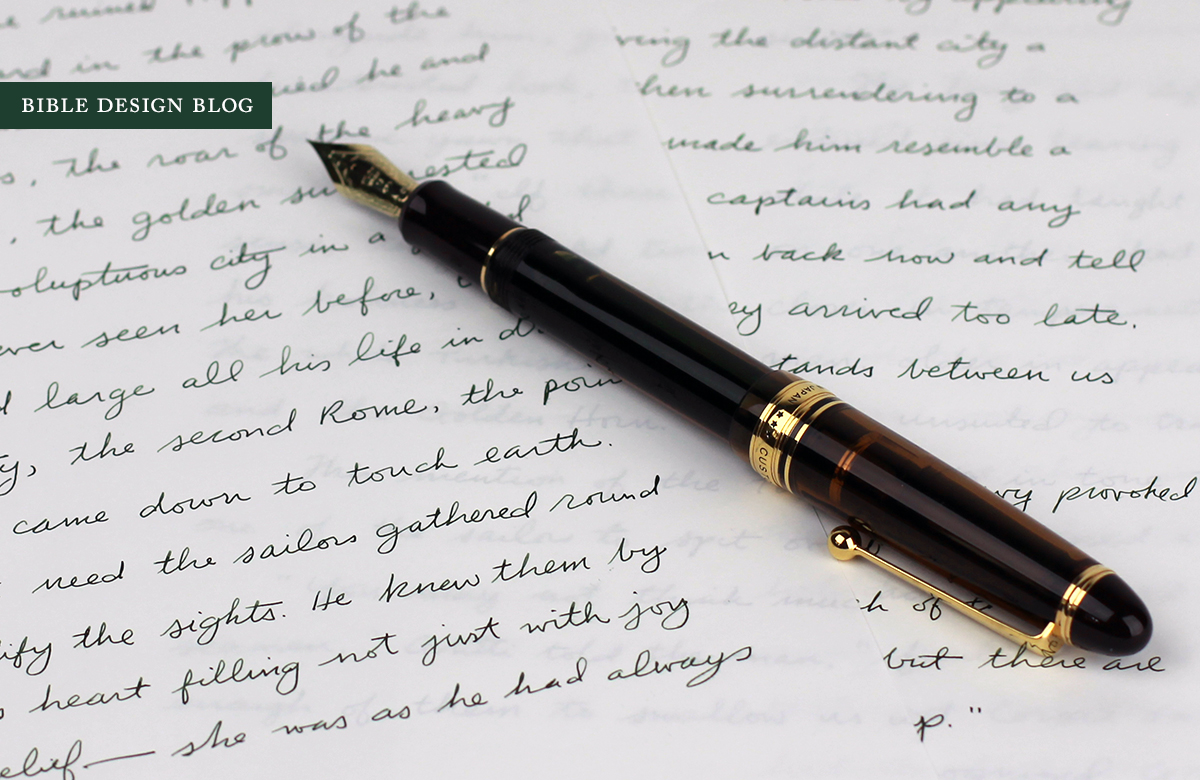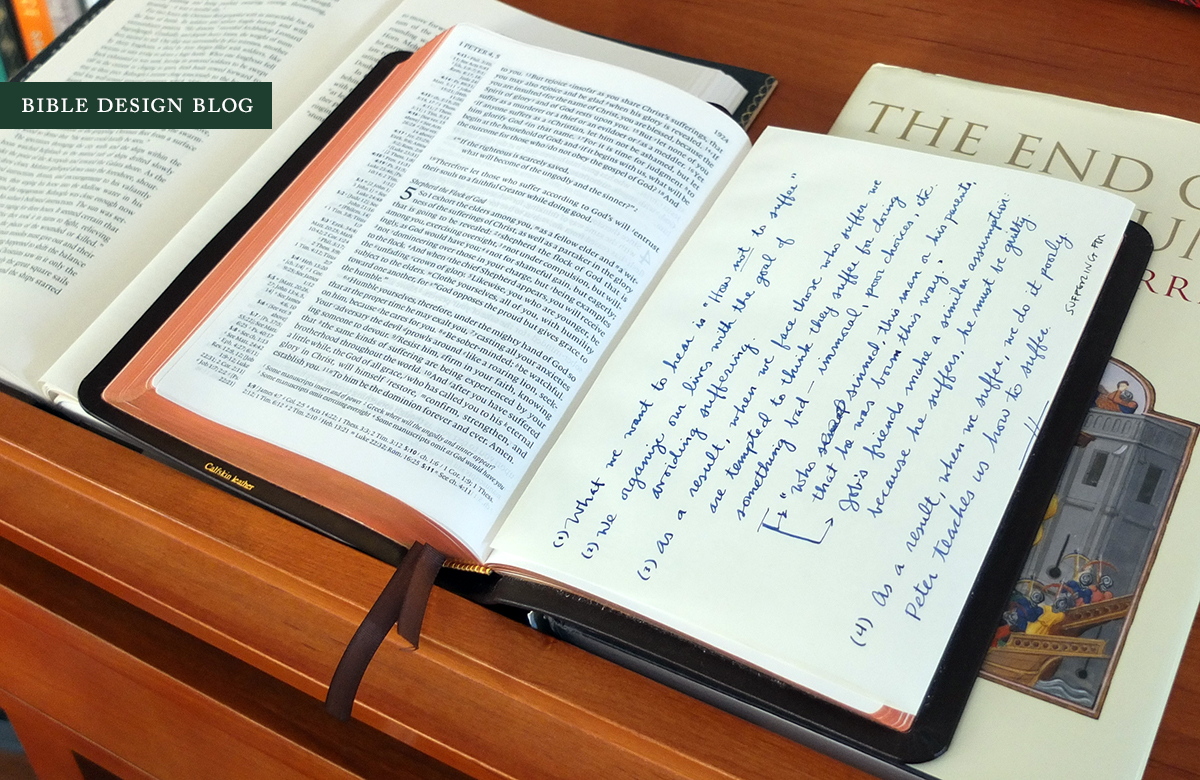Thin Paper for Notes and Outlines
Yesterday on my other blog, I mentioned some of the advantages of Writing by Hand. By nature I'm a complicator. I never do things one way when I can do them five different ways, which is why I don't have a single favorite Bible to recommend, or a single piece of software, or a pen, paper, whatever. My workflow these days reflects this complicating urge: sometimes I write notes down, sometimes I type them on the laptop, sometimes I thumb them slowly into the Evernote app on my phone. Since most ideas will be re-worked and re-written, it doesn't matter how they're captured. Increasingly I find myself relying on paper, especially now that I can snap a photo of the paper notes and make them searchable in Evernote -- best of both worlds.

When teaching or preaching, which I'm occasionally called upon to do, I've started to rely on handwritten notes and outlines more than ever. A few years ago I wouldn't have dreamed of this. Everything had to be typed and laser-printed before I was happy -- or if I was lecturing, I created elaborate multimedia slideshows (which I still do for the right context). Something about the immediacy of pen and paper appeals to me, however. The problem is, I don't like jamming paper into my Bible.
At the risk of sharing too much information, the other thing you need to know about me is that I don't like bulk and clutter. I don't want to carry around a bunch of extra ballast when I'm in front of people. If I bring a bunch of books, papers, etc., to the lectern, I end up ignoring them. So when I started using handwritten notes, I took advantage of thin Tomoe River paper, which allows me to interleave pages into my Bible without adding much bulk.
I've mentioned Tomoe River before on Bible Design Blog. It's a thin Japanese paper that fountain pen users adore for its ink-handling properties. While it isn't as thin as most Bible paper, Tomoe River is close enough to be discreet. I can tuck a page or two of notes into the Bible near whatever passage I intend to discuss, and it disappears until needed. In the photos you see my notes from last Sunday written on a folded A5 sheet, which fits nicely in the Cambridge Clarion ESV (although in the pulpit I was using the larger Legacy I wrote about yesterday).
If the idea of handwritten notes appears to you, and you're as bulk-conscious as I am, you can find out more about my method and sources by following the link: "Writing by Hand."


